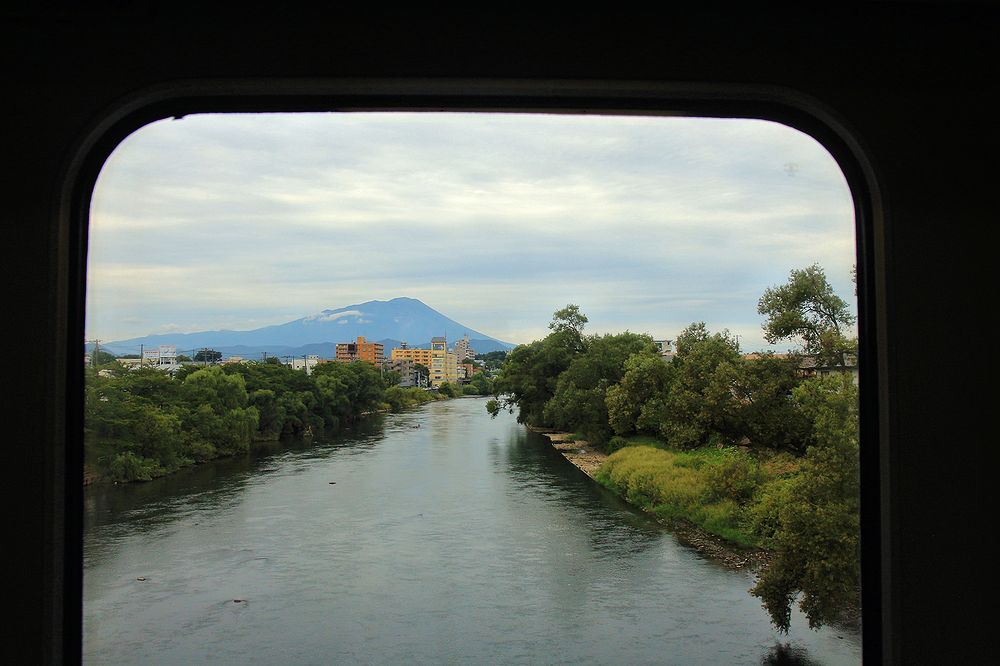Yamada-sen (Morioka – Miyako) 山田線 (盛岡‐宮古)
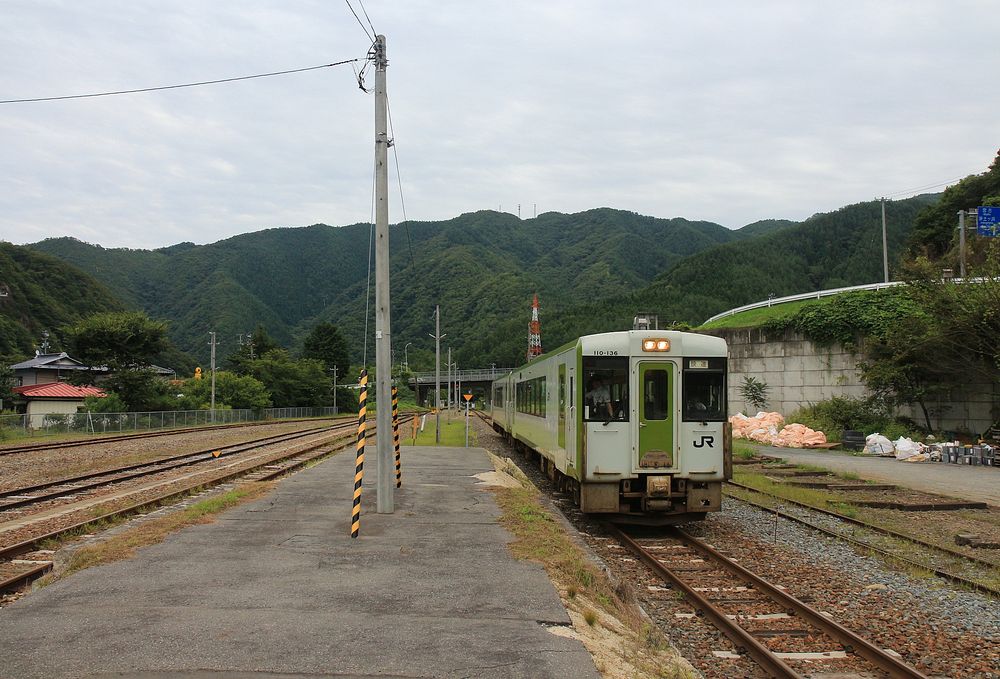
KIHA 110-136 and -137 entering Moichi on the way to Kuzakai summit and Morioka. (2019)
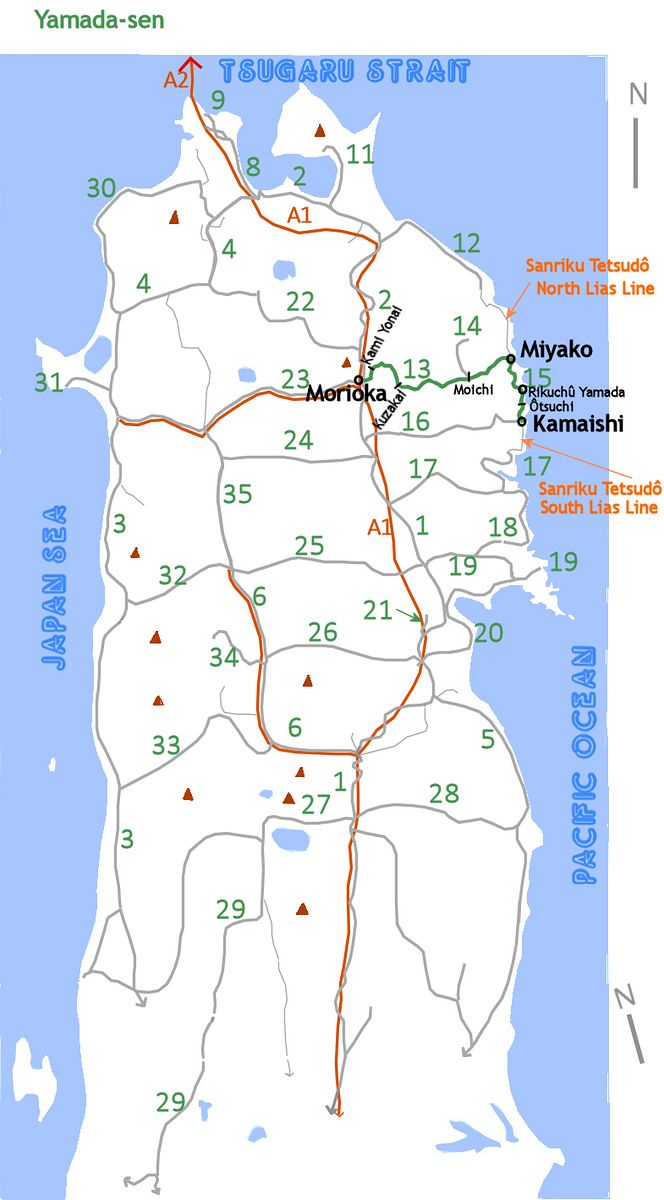
The entire Yamada-sen is 157, 5 km long, diesel operated, and connects the city of Morioka in Iwate Prefecture with the town of Miyako on the Iwate coast to the east. From Miyako it continued along the coast southward via Yamada (Rikuchû Yamada) to Kamaishi ("Rikuchû" is the old name of an area which covers most of Iwate Prefecture except the south east, and an area in Akita Prefecture). The coastal section from Miyako to Kamaishi was completely destroyed in the earthquake and the following Tsunami of March 11, 2011. It was then reconstructed and reopened as an element of the Sanriku Tetsudô on March 23, 2019. Thus Rikuchû Yamada, which gave the line its name, is no longer served by JR.
The Yamada-sen is one of Japan's most problematic railway lines, as – after serving some eastern outskirts of Morioka – it runs through a sparsely populated mountain area all the way down to Miyako (102, 1 km from Morioka). A few settlements need to be served as far as Yamagishi (4, 9 km from Morioka), and the end of the flatter section is reached after cutting through a first tunnel at Kami Yonai (9, 9 km from Morioka). From here on the line climbs steeply into the mountains through dense forests and numerous tunnels, the only two stops on the way having been closed in 2016. One of the stops was Ôshida, halfway up to the summit at at Kuzakai (751 m high, 35, 6 km from Morioka). Ôshida once was an extensive switchback stop which formed a break in the climb and enabled trains to cross. The down train would reverse in the switchback and then back into the Ôshida platforms, while the up train would back out of the Ôshida platforms into the switchback before continuing uphill. The switchback arrangement was closed in 1982.
After Kuzakai summit follows the long and – with continuous landslides and flooding – dangerous descent over innumerable bridges and through dozens of tunnels through almost uninhabited wilderness to Miyako. On the way at Moichi (87 km from Morioka) there used to be a connection with the line to Iwaizumi, but the latter was closed in 2010. For some time the few little stops that existed on the eastern side of the pass were prettily decorated with flowers and partly still saw station staff, but today this is but a memory.
The most important link between Morioka and Miyako today is the road, on which a relatively frequent bus service is provided. Huge construction works are now turning the road connection into an express highway, cutting through the mountains in an almost straight line.
The railway's pass route over Kuzakai Pass has many times been interrupted due to natural disasters. In 1946 the upper part of the eastern side was devastated and remained closed until 1954. Heavy rainfall and typhoon as well as earthquake and landslide damage has occurred frequently in recent years, necessitating partial closure. On December 11, 2015, diesel car KIHA 110-132 ran into a landslide above Hiratsuto and had to be left lying where it was until May, 2017. The line could not be fully reopened until November 5, 2017.
Freight services ended in 1986, and the freight branch to Miyako port (2 km) was closed in 1984.
Today (2019) the Yamada-sen in the direction Morioka to Miyako is served by 2 accelerated trains at midday, and 2 stopping trains in the evening. In addition there is 1 accelerated service in the mid-morning which runs on specific days and partly requires seat reservation; this train is worked with an eye to guests from Tokyo heading for the Sanriku coast. 2 morning trains Morioka to Kami Yonai, 2 trains Kawauchi to Miyako, and 2 Moichi to Miyako complete the timetable in the direction Morioka – Miyako. In the other direction we see a stopping train in the early morning, then an accelerated train, and 2 more stopping trains in the evening. Just after midday there is the seasonally run accelerated train with necessary seat reservation on certain days. In addition, there is 1 morning train Miyako to Moichi and 1 to Kawauchi, 1 train in the afternoon Miyako to Moichi, and 1 Miyako to Kawauchi in the evening. 2 morning trains work Kami Yonai to Morioka.
Construction of the Yamada-sen took place gradually between 1923 and 1934 as far as Miyako. The coast line began to take shape in 1935, Kamaishi being reached in 1939.
As mentioned, the coast line from Miyako via places with an important fishing industry – Tsugaruishi, Rikuchû Yamada, and Ôtsuchi – to Kamaishi was entirely destroyed in the Tsunami of March, 2011. Before that, this section was relatively busy, with 10 stopping trains a day and at certain times tourist trains, occasionally working right through from Sendai via the Sanriku coast to Hachinohe. The little towns themselves, located in the flatter delta area of the mountain rivers, were completely overrun by the tidal wave, with horrific loss of life. Much of the railway infrastructure was smashed beyond recognition, and Rikuchû Yamada, together with its prettily decorated station, disappeared in the fires that broke out. After enormous efforts to rebuild and secure the region with many miles of new dams and river regulation systems the coastal towns could gradually be rebuilt; much of the housing now is located in higher regions and up the valleys. The railway line through the coastal hills and forests was reinstated, while the towns saw complete new stretches of line and have received neat new stations. On March 23, 2019, rail services between Miyako and Kamaishi (55, 4 km from Miyako) were resumed. The railway is now no longer in the hands of JR but belongs to the Sanriku Tetsudô, which has thus been able to connect its northern section (North Rias Line, Kuji to Miyako) to its southern section (South Rias Line, Kamaishi – Sakari).

Entering Miyako from Kamaishi, with a view of Miyako station. Standing at the platform is single unit diesel car kiha110-134, ready to work up the Yamada-sen as far as Moichi and then branch off onto the now closed Iwaizumi-sen. (2010)

Miyako junction, with a Sanriku Tetsudô North Lias line train on the left, the blue tourist train headed by KIHA 58 1505, and KIHA 110 136. (2014)

Climbing up the valley from Miyako. The village of Hikime. (2019)

A view from diesel car kiha110-134 bound for the now closed branch to Iwaizumi. Between Hikime and Moichi. (2010)

KIHA 110 128 at Moichi. (2010)

At Haratai, the next station after Moichi up the valley. (2008)
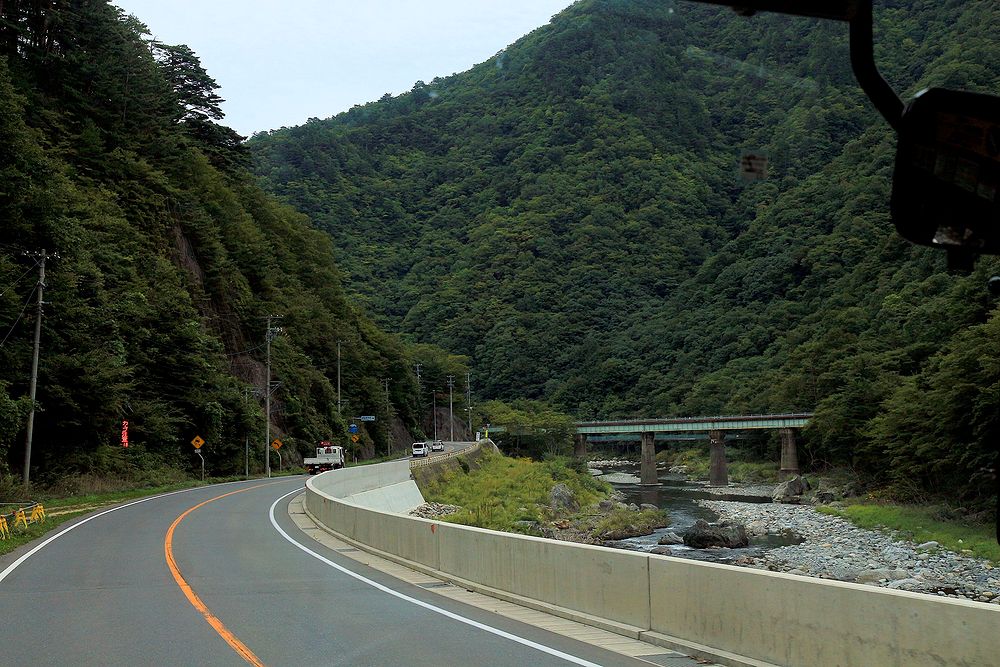
One of the many bridges of the Yamada-sen, seen from a bus service to Miyako. Near Haratai. (2019)

From the train climbing up from Haratai to Rikuchû Kawai. (2019)
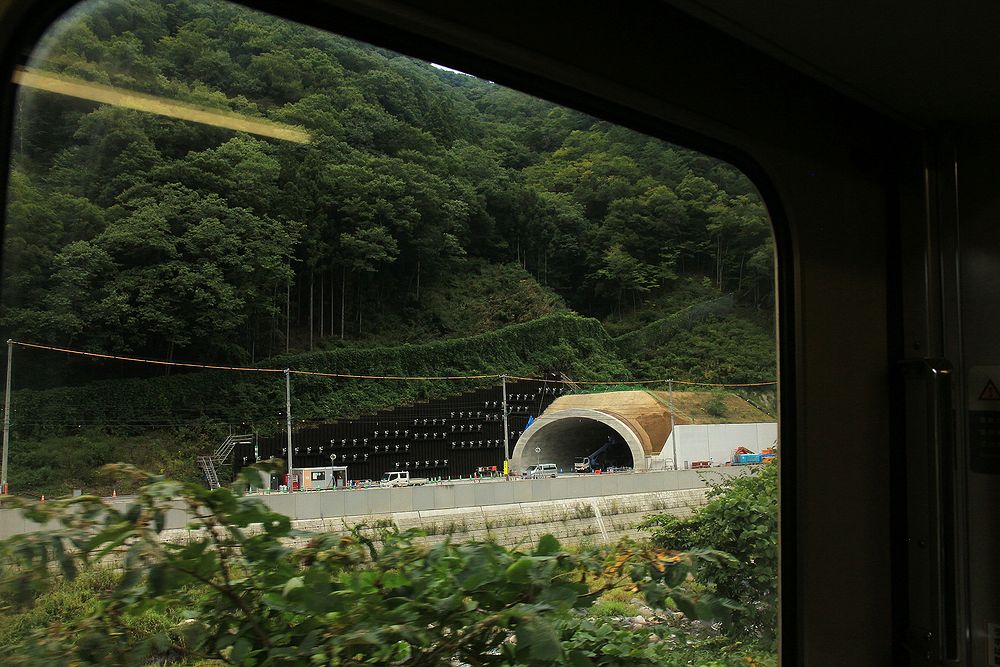
Construction of the new road connection to Miyako, seen from the train. (2019)
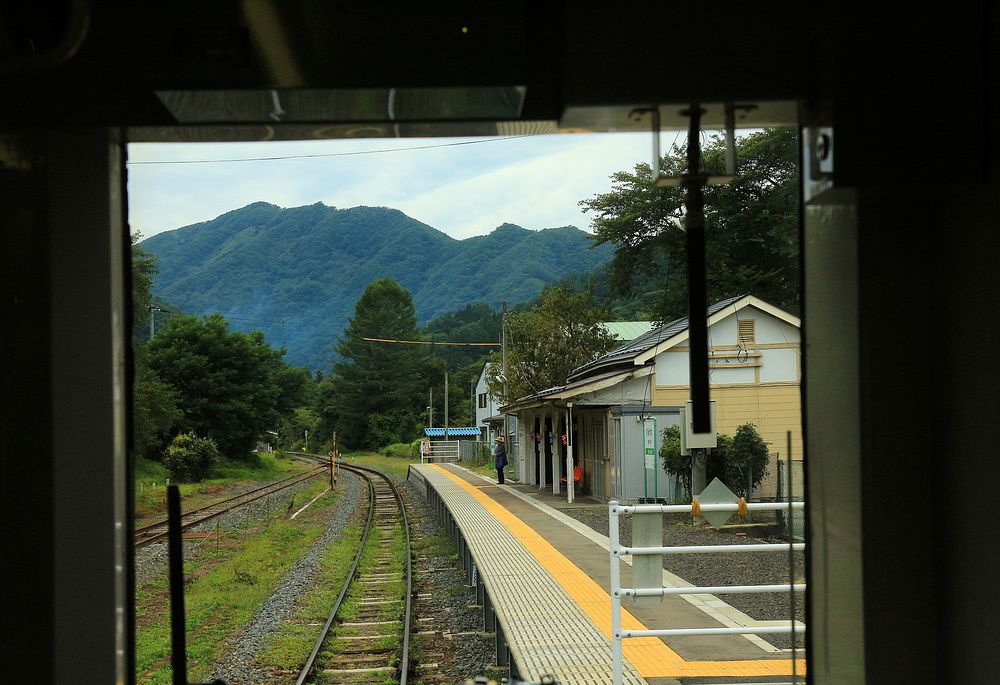
The station of Rikuchû Kawai. (2019)

From a train descending between Hakoishi and Rikuchû Kawai. (2014)

From one of the many bridges between Hakoishi and Rikuchû Kawai. (2014)
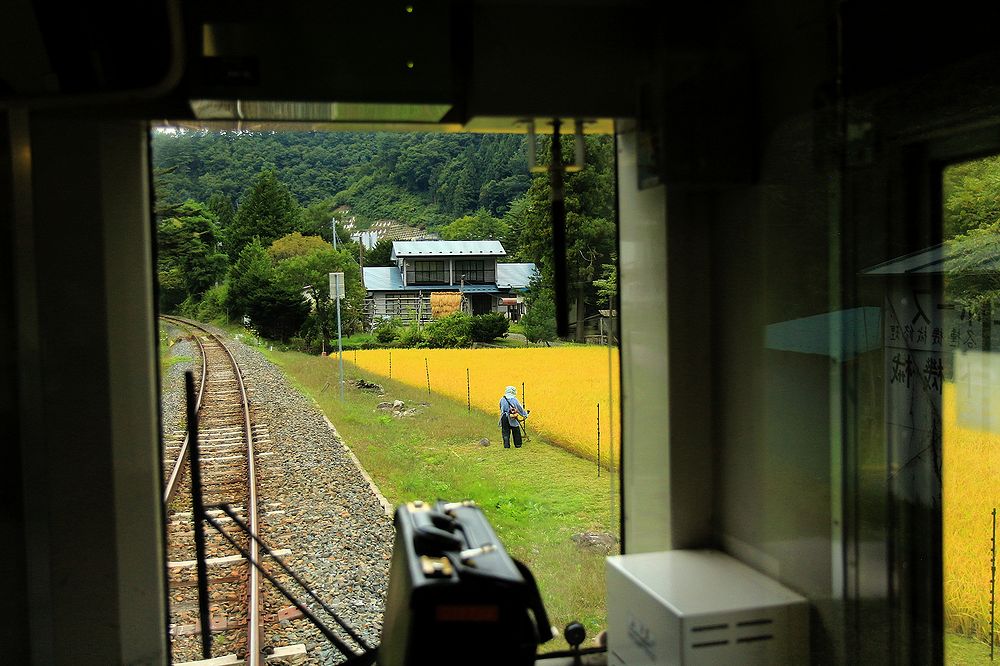
Farmer at work, in Rikuchû Kawai. (2019)
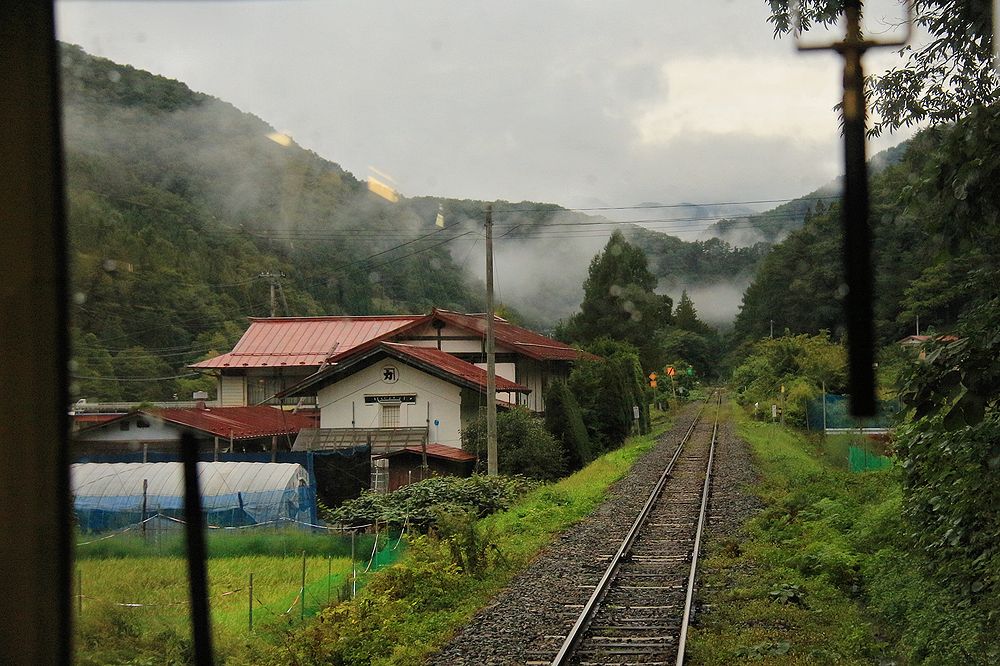
In the village of Hakoishi. (2019)
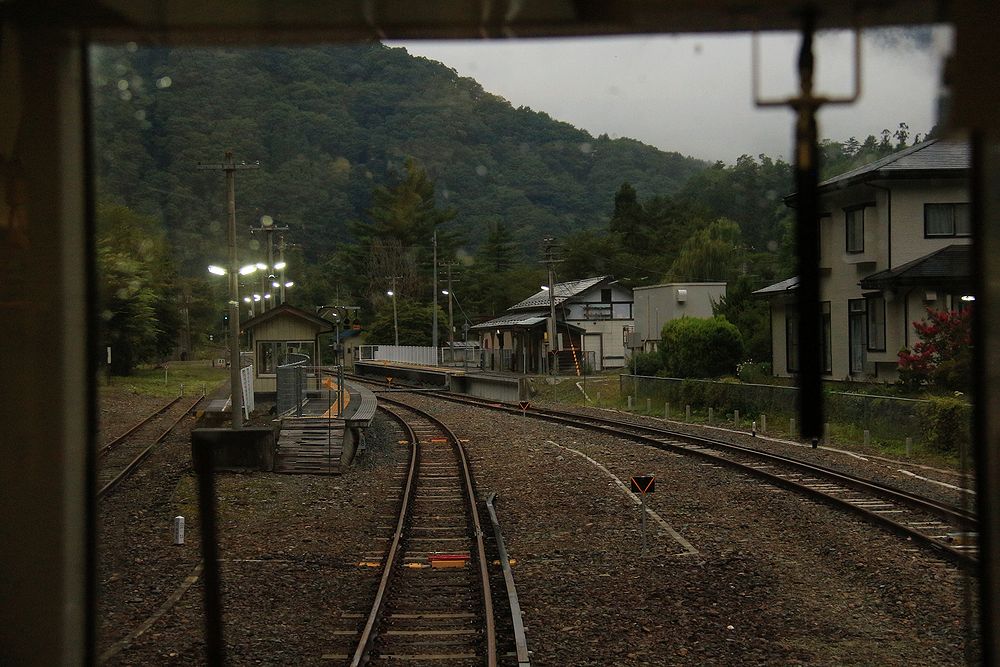
Arriving at Kawauchi. During the interruption of the line 2015-2017 train services ended here. (2019)

A typical bridge on the climb after Hiratsuto. (2019)
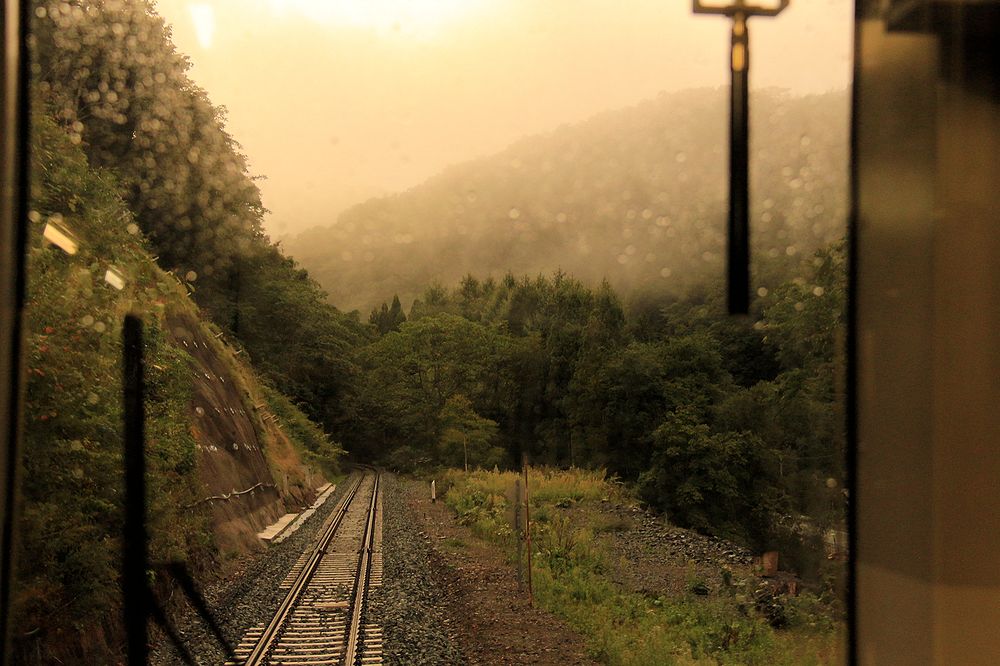
As the train gains height suddenly the sun comes out. Here between Hiratsuto and Matsukusa car no.110 132 ran into a landslide in December 2015 and slid down the siding. (2019)

As the train approaches Kuzakai Pass deer emerge out of the dark. (2019)
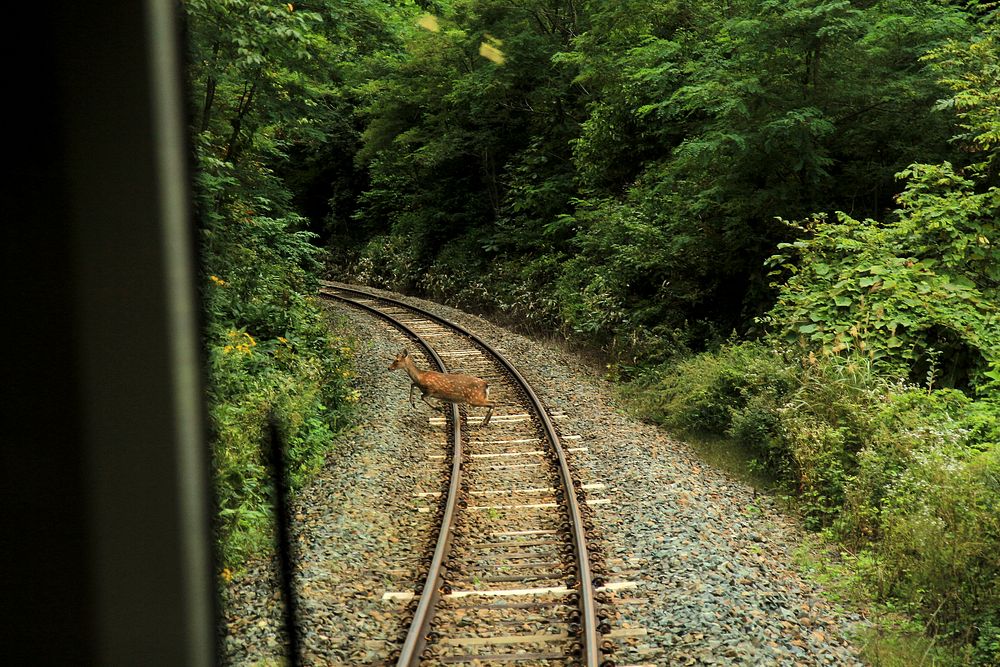
On another day the train again encounters deer on the way up to Kuzakai. (2019)
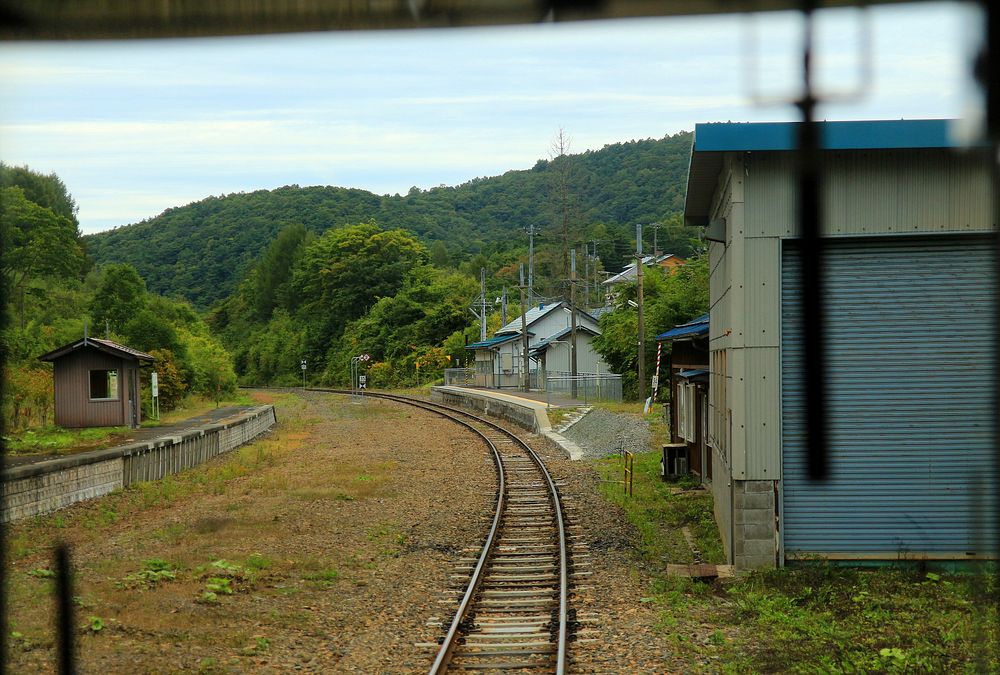
Kuzakai summit. Today trains no longer cross here.

After nightfall KIHA 110 132 is waiting at Kuzakai summit for an oncoming service. (2010)
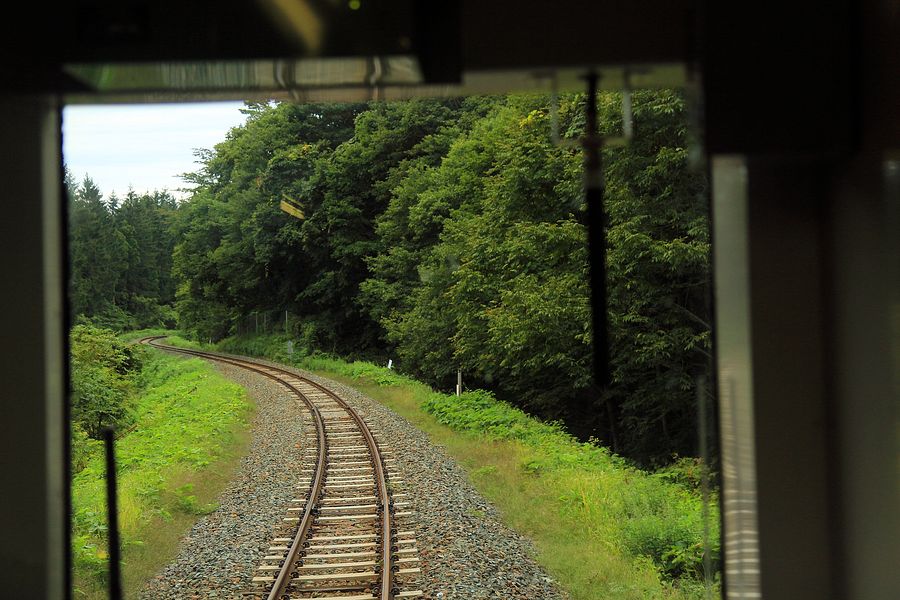
Tackling the steep descent from Kuzakai westwards down to Kami Yonai. (2019)
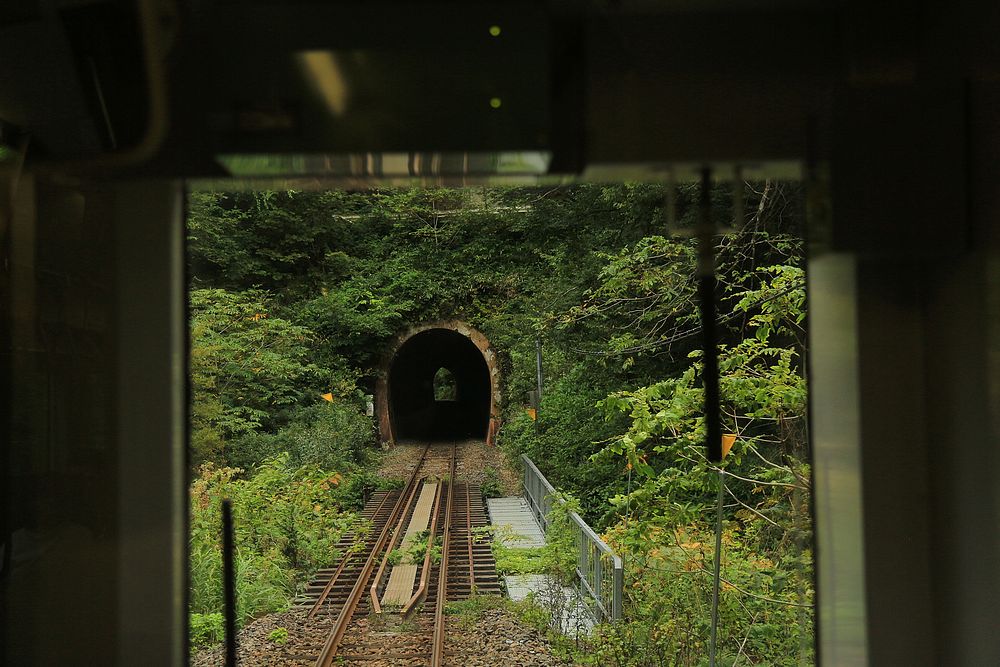
One of the countless tunnels on the line over Kuzakai pass. From a train descending towards Kami Yonai. (2019)
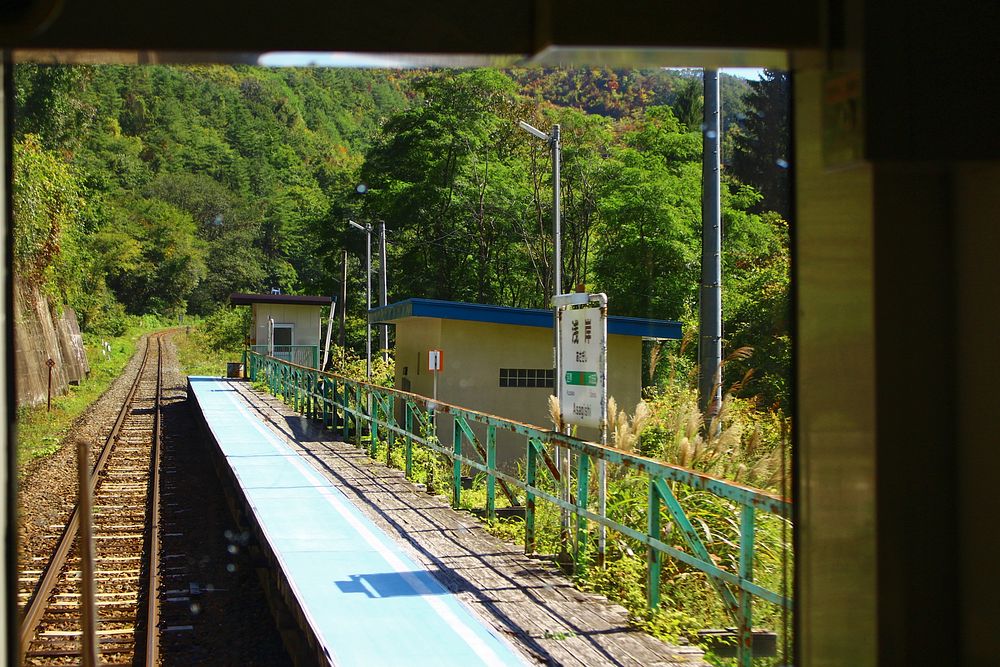
Asagishi, a halt that saw practically no passengers and was closed in 2016. From a train climbing up to Kuzakai pass from Kami Yonai. (2014)
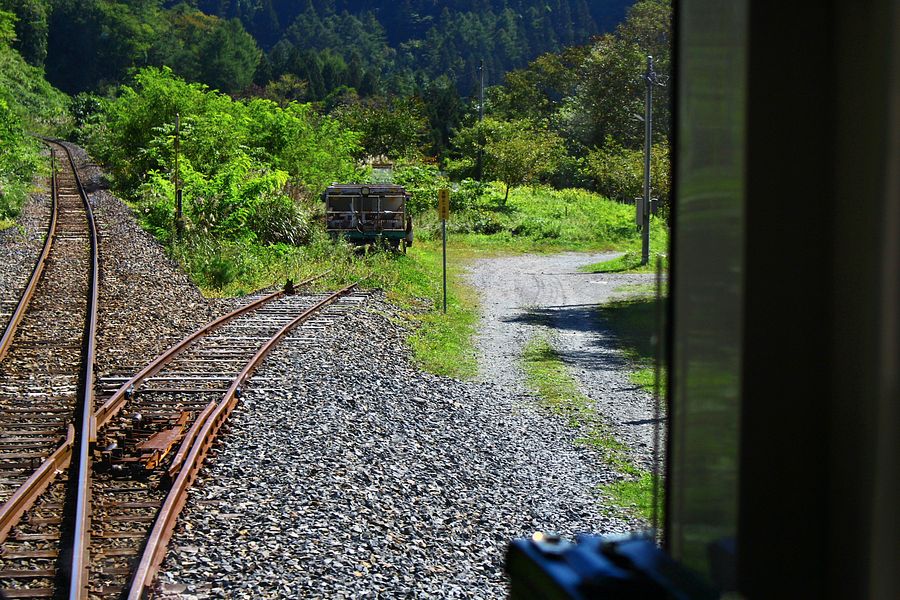
The remains of the former crossing point and switchback at Ôshida, on the incline from Kami Yonai to Kuzakai summit. (2014)

Harvest in the rice fields, seen from the train setting out from Kami Yonai towards the incline. (2014)
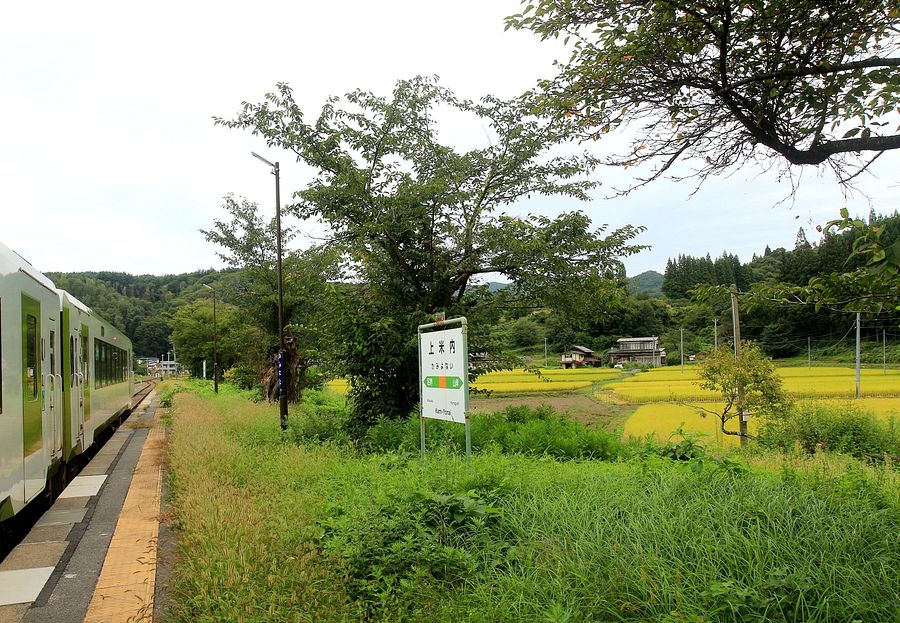
KIHA 110 136 and -137 waiting at Kami Yonai. (2019)
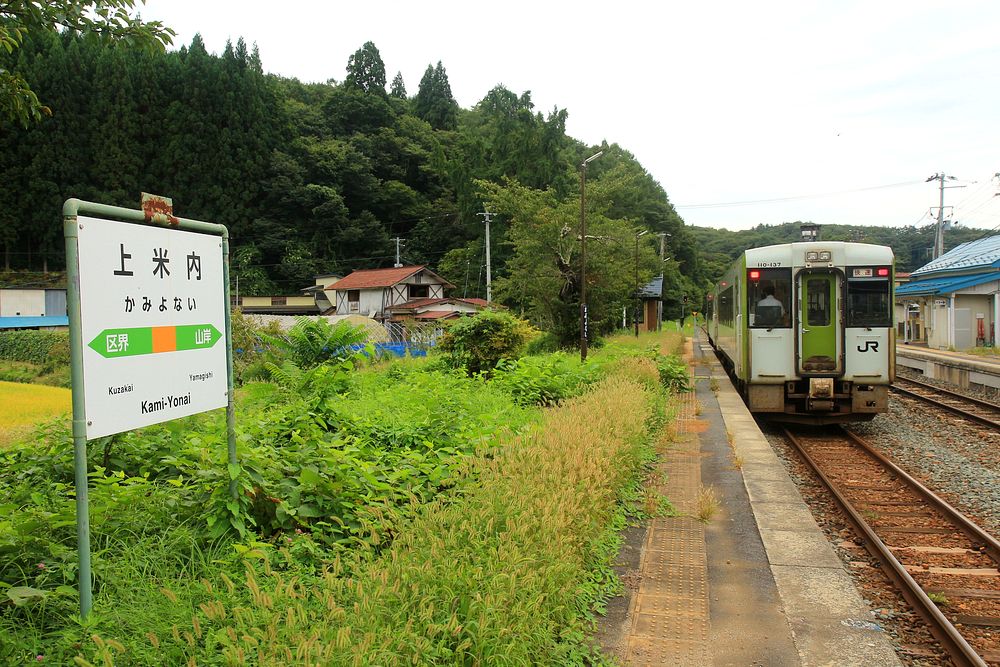
KIHA 110 136 and -137 at Kami Yonai. (2019)
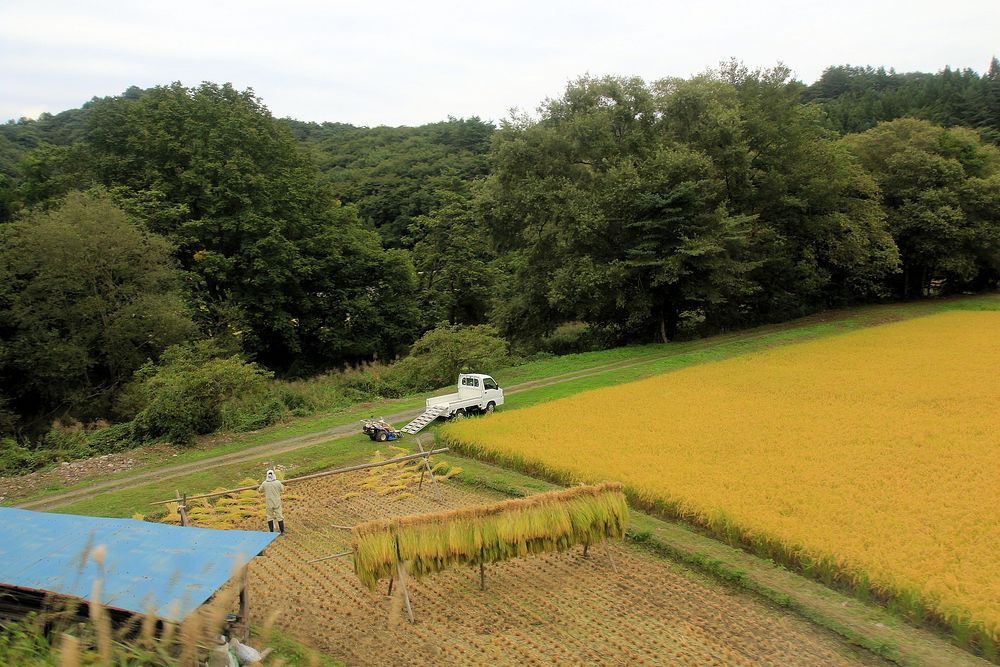
Harvest, seen from a train after leaving Kami Yonai for Morioka. (2019)
